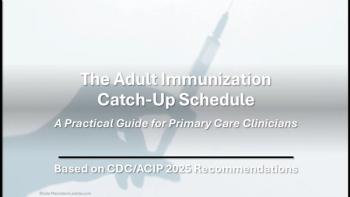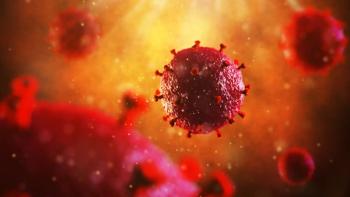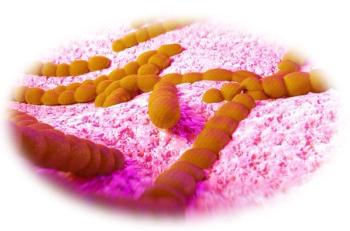
AAN: Vaccine Aimed at ?Mad Cow? Disease Protects Prion-Explosed Mice
BOSTON -- An investigational orally delivered mucosal vaccine appears to offer significant protection against prion-related infections, at least in mice, investigators reported here.
BOSTON, May 3 -- An experimental, orally delivered mucosal vaccine appears to offer significant protection against prion-related infections, at least in mice, investigators reported here.
Mice orally inoculated with the vaccine and developed high antibody titers to the prion protein remained symptom-free more than 400 days after a challenge with the infectious prion disease scrapie, reported Thomas Wisniewski, M.D., of New York University at the American Academy of Neurology meeting.
In contrast, control animals became symptomatic in about 120 days, and inoculated mice with lower levels of antibody titers to the prion protein had delayed progression to frank disease, said Dr.Wisniewsk.
There is currently no treatment for prion infections, which are uniformly fatal and rapidly progressive when the symptoms appear, with death occurring in a matter of months. But prior to the symptomatic period, there is a long incubation period, in some reported cases more than 40 years.
Although a human version of the vaccine may be some time away, animal versions might help to prevent animal-to-human transmission of prion diseases such as chronic wasting disease in deer and elk, or, presumably, bovine spongiform encephalopathy also known as mad cow disease, Dr. Wisniewski said.
"In some western states, in captive deer and elk populations, the prevalence of chronic wasting disease can be as high as 80%," he said. "It is not known whether chronic wasting disease is transmissible to humans, but there is a lot of evidence to suggest that it would be."
Prion diseases in humans can be inherited-as in the case of Creutzfeld-Jakob disease-or infectious, as in the case of variant CJD (caused by eating meat from cattle infected with bovine spongiform encephalopathy.
Prion-associated diseases are marked by a pathogenic alteration of the PrPc protein, a normal cellular protein expressed at high levels in neurons, with important synaptic maintenance functions.
"In the disease state, [the PrP protein] undergoes a conformation change to a high beta-sheet content, and the PrPSC form of the protein can set up an auto-catalytic vicious cycle, whereby more PrPC is converted to the PrPSC," Dr. Wisniewski said.
In hoofed animals infected with chronic wasting disease, the PrPSC form of the prion protein is expressed in muscle and in saliva, and the diseases has been shown to be transmissible in experiments with primates.
Dr. Wisniewski and colleagues developed an active vaccine designed to protect against prion infections from an exogenous source. They used attenuated Salmonella vaccine strains that were made to express single or multiple repeats of the intact mouse PrP, or fragments corresponding to amino acids 112 to 214 of the PrP molecule, with either unaltered or tailor-made modifications of the sequences.
"We did this in such as way that normal, wild-type animals, non-genetically manipulated animals, would be amenable to this approach," he said. "This approach is particularly aimed at prionoses that are infectious in nature such as chronic wasting disease, new variant CJD, et cetera."
They chose Salmonella vaccine strains because they have been documented to induce mucosal immunity in human vaccines such as that for typhoid fever, he noted.
After they had been orally vaccinated, the animals were divided into low- and high-responder groups based on antibody titers to the PrPSC protein, then challenged with an oral dose of the prions.
Under normal circumstances, 100% of mice given the experimental form of scrapie would die from the disease after an incubation period of 180-200 days. But the authors found that the mice with a high gut secretory anti-PrP titer immumoglobulin A (IgA) titer and a high systemic IgG titer remained asymptomatic at 400 days (long-rank test P
Newsletter
Enhance your clinical practice with the Patient Care newsletter, offering the latest evidence-based guidelines, diagnostic insights, and treatment strategies for primary care physicians.






























































































































































































































































































